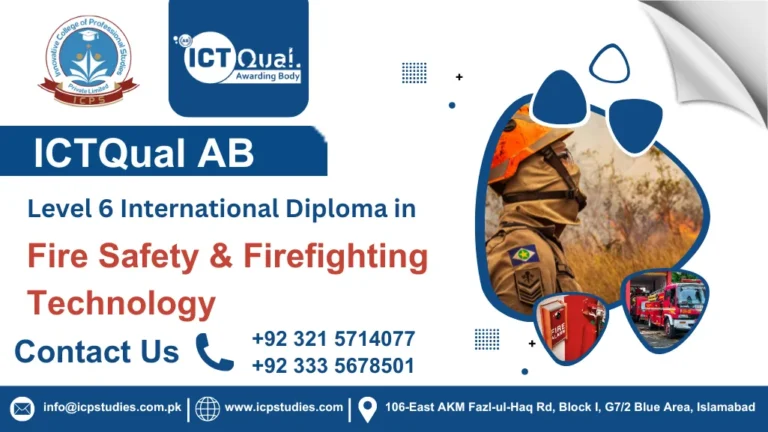In the bustling world of construction and industrial projects, safety stands as a paramount concern. Ensuring that scaffolding structures are not only sturdy but also compliant with safety standards is crucial to prevent accidents and protect workers. This is where the Level 1 Award in Scaffolding Inspection steps in — a specialized certification designed to equip individuals with the knowledge and skills necessary to perform thorough inspections of scaffolding systems.
Scaffolding provides essential temporary support for workers, tools, and materials at various heights during construction, maintenance, and repair tasks. A properly inspected and maintained scaffold ensures a safe working environment, preventing falls and other accidents that could lead to injuries or even fatalities. By undertaking the Level 1 Award in Scaffolding Inspection, professionals can play a pivotal role in upholding safety standards and regulatory compliance on construction sites.
The Level 1 Award in Scaffolding Inspection is a vital qualification for anyone involved in the construction industry, emphasizing the importance of safety and compliance in scaffolding operations. By acquiring this certification, professionals not only protect the well-being of workers but also contribute to the overall efficiency and productivity of construction projects. Investing in scaffolding inspection training underscores a commitment to safety excellence and ensures that scaffolding structures meet the highest standards of safety and reliability. Whether you are starting your career in construction or seeking to advance your safety credentials, this certification equips you with essential skills to play a pivotal role in maintaining safe working environments.
All About ICTQual Level 1 Award in scaffolding Inspector
Course Overview
The Level 1 Award in Scaffolding Inspector is a specialized certification designed to provide individuals with the necessary skills and knowledge to conduct thorough inspections of scaffolding structures in various construction and industrial settings. This qualification equips inspectors with the competence to assess scaffolding safety and compliance with regulatory standards, ensuring the protection of workers and the integrity of construction projects.
The Level 1 Award in Scaffolding Inspector plays a critical role in ensuring the safety and compliance of scaffolding structures in construction and industrial environments. By obtaining this certification, professionals demonstrate their commitment to maintaining high safety standards and protecting the well-being of workers. Investing in scaffolding inspection training not only enhances individual competence but also contributes to the efficiency and success of construction projects by preventing accidents and ensuring regulatory compliance.
Study Units
- Introduction to Scaffolding
- Legislation and Standards
- Scaffold Components
- Inspection Procedures
- Common Scaffolding Hazards
- Practical Inspection Training
- Safety Procedures and Emergency Response
The entry requirements for the ICTQual Level 1 Award in Scaffolding Inspector typically include:
- Age Requirement: Participants must be at least 18 years old.
- Basic Literacy and Numeracy: Competence in reading, writing, and basic math skills is usually required to understand course materials and assessments.
- Relevant Experience: While specific prior experience may not be mandatory, having some background in construction or scaffolding is advantageous.
- Health and Safety Awareness: A basic understanding of health and safety regulations and practices related to construction is often beneficial.
- PPE Requirement: Participants may need to provide and wear appropriate personal protective equipment during training.
- Registration: Completion of necessary registration forms and payment of any applicable fees.
Always check with the specific training provider for any additional or specific entry requirements, as they can vary.
4o mini
The ICTQual Level 1 Award in Scaffolding Inspector is designed for:
- Scaffolding Inspectors: Individuals who will be responsible for inspecting scaffolding structures to ensure they meet safety standards.
- Construction Workers: Those working in construction who want to enhance their knowledge of scaffolding safety and inspection.
- Site Supervisors and Managers: Professionals overseeing construction sites who need to understand scaffolding safety and regulations.
- Safety Officers: Individuals responsible for health and safety compliance on construction sites.
- New Entrants to the Industry: Individuals looking to start a career in scaffolding or construction with a focus on safety practices.
This course equips participants with the essential skills and knowledge to effectively inspect scaffolding and ensure compliance with safety standards.
Learning Outcome
Introduction to Scaffolding
- Understanding: Gain a comprehensive understanding of scaffolding, including its purpose, types, and common applications in construction and industrial settings.
- Types of Scaffolds: Identify different types of scaffolds such as supported scaffolds, suspended scaffolds, and mobile scaffolds, along with their respective uses and configurations.
- Basic Components: Familiarize with basic components of scaffolding systems, including standards, ledgers, transoms, and ties, and their roles in scaffold stability and strength.
Legislation and Standards
- Legal Framework: Understand national and local legislative requirements and industry standards governing the design, erection, dismantling, and inspection of scaffolding.
- Compliance: Learn how to ensure scaffolding operations comply with applicable regulations, codes of practice, and safety standards to maintain a safe working environment.
Scaffold Components
- Identification: Identify and describe key components of scaffolding systems, including tubes, couplers, boards, and guardrails.
- Roles and Functions: Understand the roles and functions of each component in providing structural support, stability, and safe access for workers.
Inspection Procedures
- Pre-use Checks: Develop skills to conduct pre-use checks of scaffolding systems to ensure they are safe for use before each work shift.
- Regular Inspections: Learn systematic methods for conducting regular inspections of scaffolding, including visual assessments and structural checks.
- Post-assembly Inspections: Understand procedures for thorough inspections following scaffold assembly to confirm compliance with design specifications and safety requirements.
Common Scaffolding Hazards
- Identification: Recognize common hazards associated with scaffolding, such as instability, overloading, inadequate foundations, and improper assembly.
- Risk Assessment: Learn how to assess risks related to scaffolding operations and implement control measures to mitigate hazards effectively.
Practical Inspection Training
- Hands-on Experience: Gain practical experience in conducting scaffold inspections under simulated or real-world conditions.
- Use of Tools: Learn how to use inspection tools and equipment, including measuring devices, plumb lines, and safety harnesses, to ensure thorough assessments.
- Documentation: Practice documenting inspection findings accurately and effectively using standardized reporting formats and record-keeping procedures.
Safety Procedures and Emergency Response
- Safety Protocols: Implement safety procedures during scaffolding operations, including the use of personal protective equipment (PPE), safe access and egress, and fall prevention measures.
- Emergency Preparedness: Learn emergency response protocols for scaffold-related incidents, including evacuation procedures, first aid responses, and communication with emergency services.
These learning outcomes equip participants with the knowledge and practical skills necessary to effectively inspect scaffolding systems, ensure compliance with safety standards, and contribute to a safe and secure working environment in construction and industrial settings.
FAQs about ICTQual Level 1 Award in scaffolding Inspector







